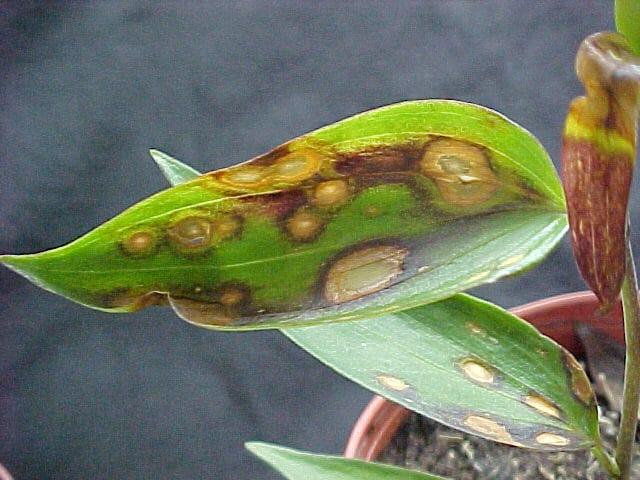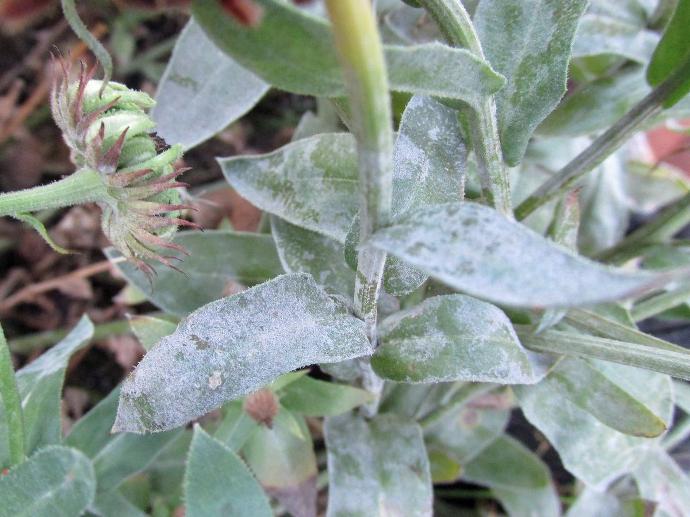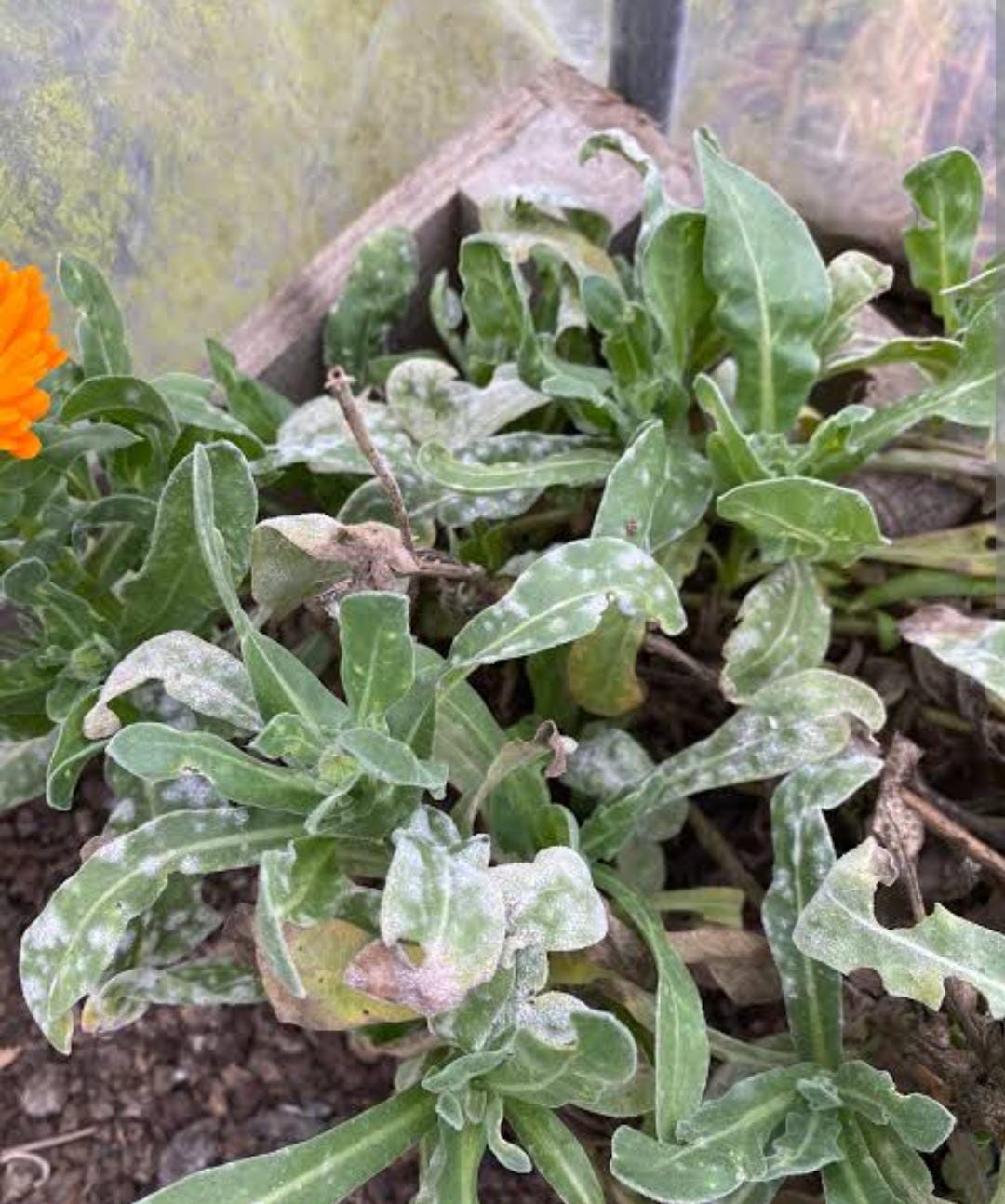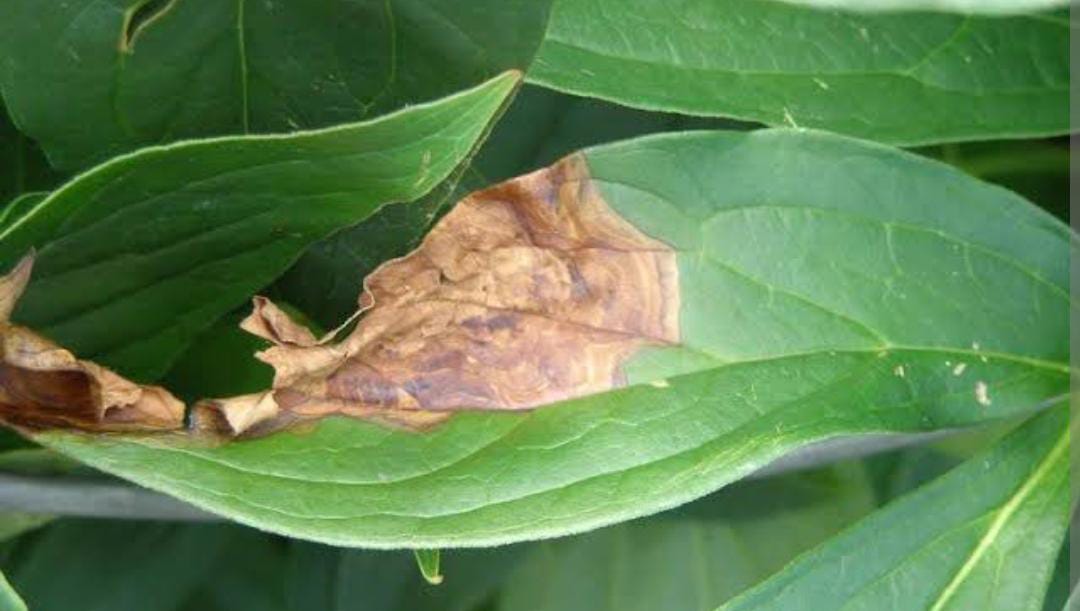Angelonia Plant
Angelonia, commonly known as Summer Snapdragon, is an annual with spiky flowers. Plant in well-draining soil with full sun exposure. Water regularly and deadhead spent flowers to encourage continuous blooming throughout the growing season.
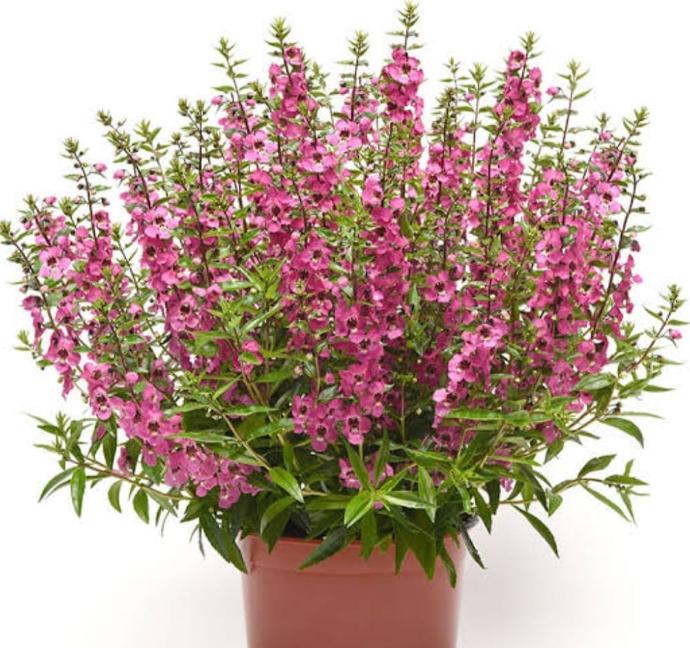
Habit
Perennial
Height
12-24 inches
Growth
Fast
Soil
Well Drained, Loamy
Shade
Full Sun
Moisture
Moist
Edible
No
Medicinal
No
Origin
Mexico
Climatic Condition
Tropical, Sub tropical
Temperature (°)
20-30
Humidity (%)
60-70%
Potting media
Peat+Perlite
Fertilizers
Balanced NPK(10:10:10)
Watering
Regular Watering
Plant Weight
50-100 g
Flowering Time
Summer to Fall
Soil Ph level
6.0-7.5
Water Ph level
6.5-7.0
Soil EC
0.8 dS/m
Yield Per Plant
dozens of flowers per tree
NPK ratio
10:10:10
life Span
1-2 yrs
Health Benefits
Suggested Grow Media or Potting Mix ?
40% peat, 30% perlite, 30% sand
Suggested Fertigation/Fertilizers
Fertilize every 2-3 weeks with a balanced fertilizer.
Common Diseases and Remedies
Powdery mildew, botrytis blight (grey mould).
white powdery substances on leaves, stunted growth. Brown spots on leaves, grey mould on affected areas.
remove infected plant parts.
HEALTH BENEFITS
Angelonia, often referred to as "summer snapdragon" due to its appearance, is a flowering plant native to Central and South America. While it is primarily known for its ornamental value in gardens, Angelonia is also associated with several potential health benefits, particularly in traditional medicine. These include:
- Anti-inflammatory properties: Angelonia has been used in traditional herbal medicine for its potential to reduce inflammation, which may help with conditions like arthritis or muscle pain.
- Antioxidant effects: Like many plants, Angelonia contains compounds that may help combat oxidative stress in the body, which is linked to aging and various chronic diseases.
- Antimicrobial activity: Some studies suggest that extracts from Angelonia may have antimicrobial properties, which could help fight infections caused by bacteria or fungi.
- Promoting digestive health: In certain traditional practices, Angelonia has been used to support digestive health and treat conditions like indigestion or constipation.
- Stress relief: Certain herbalists use Angelonia for its calming effects, potentially helping to reduce stress or anxiety.
However, it's important to note that while these benefits are promising, scientific research on Angelonia's health effects is still limited. Always consult a healthcare professional before using it for medicinal purposes.
What Is An Angelonia ?
Angelonia, also known as summer snapdragon, is a flowering plant native to Mexico, the West Indies, and South America. It belongs to the Plantain family. The Angelonia plant is known for its upright growth and long-lasting snapdragon-like flower spikes, hence the name "summer snapdragon. These plants are generally planted as annuals in cold climates and as perennials in hot regions. They are valued for their ability to thrive in warm, sunny conditions and continue to bloom throughout the summer. Angelonia flowers come in many colours, including purple, pink, blue and white, depending on the variety. Angelonia plants are often used to add colour and texture in gardens, landscapes, and containers. They are also popular as cut flowers in floral arrangements due to their long vase life. With proper care, angelica plants can be a beautiful addition to any garden or landscape.
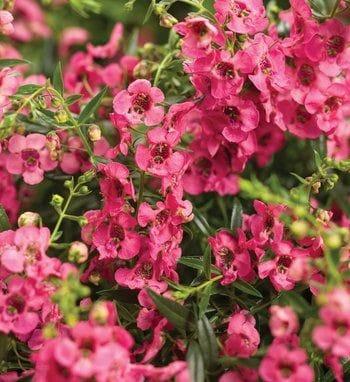
What Are The Different Types Of Angelonia Plants?
1. Angelonia angustifolia
This is a derivative of many Angelonia varieties. Its narrow leaves and flowers blooming in spikes are in various colours such as purple, red, lavender and white.
2. Serena Series
Known for its growth habit and flower diversity, the Serena Series has "Serena Purple", "Serena Lavender", "Serena White" and many other varieties. These plants are perfect for borders, containers and large plantings.
3. Serenita Series
Similar to the Serena Series, the Serenita Series has plants planted with many flowers. Varieties such as 'Serenita Pink', 'Serenita Raspberry', 'Serenita Sky Blue' and more. They are perfect for small spaces and storage.
4. Angel Face Series
Angel Face Series has larger and higher flowers than other angel types. Many products such as "Angelface Blue", "Angelface Perfectly Pink", "Angelface White" and more. They make the perfect focal point in a garden bed or container mix.
5. Archangel Series
Known for their growth and large, beautiful flowers, the Archangel Series comes in a variety of colours, including several bi-color varieties. For example, "Archangel Cherry Red", "Archangel Black Rose", "Archangel Purple", etc. These flowers add height and drama to the garden landscape.
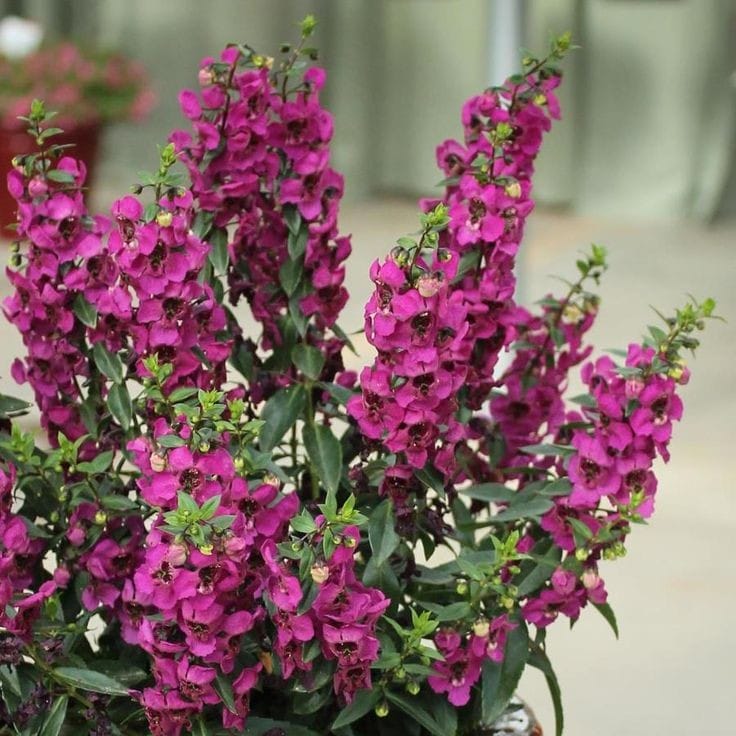
How to Care for Angelonia Plant ?
1. Location
Angelonia plants are often grown in outdoor gardens, landscapes, and containers. They thrive in full sun and warmth, making them ideal for outdoor growing. However, in some cases the flower can be grown at home, but it may require additional care for its development: Place flowers outdoors in a garden bed, border or container that receives at least 6-8 hours of direct sunlight per day. Growing outdoors allows flowering plants to benefit from natural sunlight, air circulation and rainfall. Growing Angelonia indoors can be challenging because it likes full sun and warmth, providing the right conditions can help it succeed. Outdoor planting is still the preferred method for growing angelica plants because they thrive in their natural habitat.
2. Sunshine
Angelonia grows well in full sun and is ideal for sunny locations. Ideally, flowering plants need at least 6-8 hours of direct sunlight per day to ensure good growth and abundant blooms. In areas with hot summers, getting some shade in the evenings will help prevent plants from becoming stressed or burned. When choosing a location to plant flowers, choose a location that receives full sun, such as a southeast bed or an east-west facing location. Do not plant flowers in areas shaded by trees, buildings or other structures; because lack of sunlight can cause leggy growth and reduced flowers. Ultimately, providing adequate sunlight is the key to producing beautiful flowers, whether planted in outdoor garden beds, borders or containers. Under the right amount of sunlight, Angelonia flower plants will thrive and provide you with colourful flowers throughout the growing season.
3. Soil
Angelonia plants prefer well-drained, well-aerated soil. Here are some tips for choosing and preparing angina soil: Make sure the soil has good drainage to prevent waterlogging, which can cause root rot. If your soil is heavy or clayey, work it with organic matter such as compost, peat moss or old manure to improve drainage. Angelonia plants prefer slightly acidic soil with a pH between 6.0 and 7.0 over neutral soil. Test the pH of the soil and adjust if necessary using amendments such as lime to raise the pH or elemental sulphur to lower the pH.
4. Hydration
Proper watering is very important for the health and growth of your angelica plants. Here are some tips for good angina irrigation: Although angelica plants are somewhat drought tolerant, they still need regular watering, especially in hot, dry weather. It is designed to keep the soil moist at all times but not waterlogged. When watering Angelica, water deeply to allow moisture to reach the root area. Shallow watering can encourage root development, making plants more susceptible to stress. Water your king's plants when the toe on the ground feels dry to the touch. This generally equates to watering every 1-2 days depending on weather and humidity. Water Angelica plants in the morning to ensure the leaves dry quickly and reduce fungal diseases. Avoid watering in the evening because wet leaves at night can encourage fungal growth.
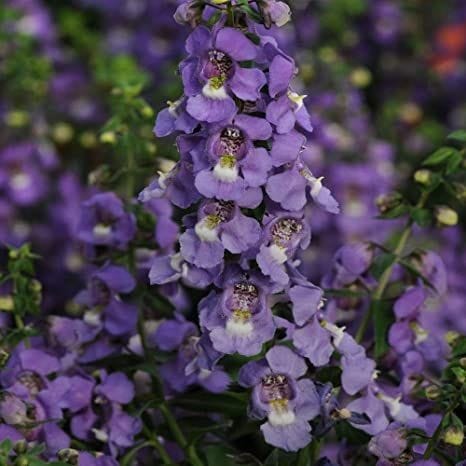
5. Nourishment
Regular nutrition is used for flowering plants to grow and bloom. Here's how to provide the right nutrients for flowers: Feed Angel plants with fertilizer evenly throughout the growing season to provide necessary nutrients. Choose a fertilizer with an NPK balance such as 10-10-10 or similar and use according to the manufacturer's instructions. Begin fertilizing after angelica plants are mature and actively growing. Fertilize every 4-6 weeks during the growing season to encourage good growth and more flowers. You can apply fertilizer to your Angelica plants in granular or liquid form. While granular fertilizer can be spread on the plant base and watered, liquid fertilizer can be diluted with water and used as a leaf spray or sprinkled directly on the soil.
6. Issues
Angelonia plants, commonly known as summer snapdragons, may have problems such as powdery mildew, aphids, or root rot. Overwatering can cause root problems, while insufficient sunlight can stunt its growth. Ensuring the soil is well drained, well watered, and receives adequate sunlight can help prevent these problems. Regular inspections for pests and prompt resolution of any problems can contribute to the overall health of your Angelonia plants. If you have specific concerns please feel free to provide additional details for specific instructions.
What are the Benefits of Angelonia Plant ?
It is used as an Anti-inflammatory remedy . It has many Medicinal Properties and even have more ornamental properties.

FAQs About Growing Angelonia
1. How to maintain angelonia plant ?
Maintaining angelonia plants is relatively simple and involves regular care to promote healthy growth and abundant flowering. Here's how to maintain angelonia plants: Trim back leggy growth as needed to promote bushiness and maintain the desired shape of the plant. Pruning can also help prevent overcrowding and improve air circulation around the plant. Monitor angelonia plants regularly for signs of pests, such as aphids or spider mites, and treat infestations promptly with insecticidal soap or neem oil. Keep an eye out for common diseases like powdery mildew and provide good air circulation to prevent fungal issues. Apply a layer of organic mulch, such as shredded bark or straw, around angelonia plants to help retain soil moisture, suppress weeds, and moderate soil temperature.
2. what are the uses of Angelonia plants ?
Angelonia plants have several uses in gardening and landscaping due to their attractive appearance, heat tolerance, and ease of care. Here are some common uses of angelonia plants: Angelonia plants are commonly used as bedding plants in garden beds and borders to add colour and texture. Their upright growth habit and long-lasting blooms make them ideal for creating vibrant displays. Angelonia plants perform well in containers, such as pots, window boxes, and hanging baskets. They can be used alone or combined with other annuals and perennials to create eye-catching arrangements for decks, patios, and balconies. Some angelonia varieties produce long-lasting cut flowers that can be used in floral arrangements and bouquets. The spikes of colorful blooms add height and interest to floral designs, making them popular choices for fresh-cut flower arrangements. The flowers of angelonia plants attract pollinators such as bees, butterflies, and hummingbirds, making them valuable additions to pollinator gardens. By planting angelonia, you can support local pollinator populations and promote biodiversity in the garden. Overall, angelonia plants offer versatility and beauty, making them valuable additions to gardens, landscapes, and containers. Whether used for bedding, borders, containers, or cut flowers, angelonia plants enhance the aesthetic appeal of outdoor spaces and provide long-lasting color throughout the growing season.
3. Can I grow Angelonia plant of indoor ?
Tthe best pot for growing angelonia plants is one that provides ample space for root growth, good drainage, stability, and aesthetic appeal. By choosing the right pot and providing proper care, you can create an ideal growing environment for your angelonia plants, whether indoors or outdoors.
4. which Pot is best for Angelonia plant?
One of the lesser-known species of indoor palm plants, this species is mainly known for its decorative value in warm and tropical regions. The plant originated in the surreal lands of the Comoro Islands, only to be spread around the tropical and subtropical areas worldwide. This variety can always be noticed when planted in the home gardens!
5. From where I can shop Angelonia plants?
One can buy these plants from online Plant Retailers and from some trusted Nurseries .
